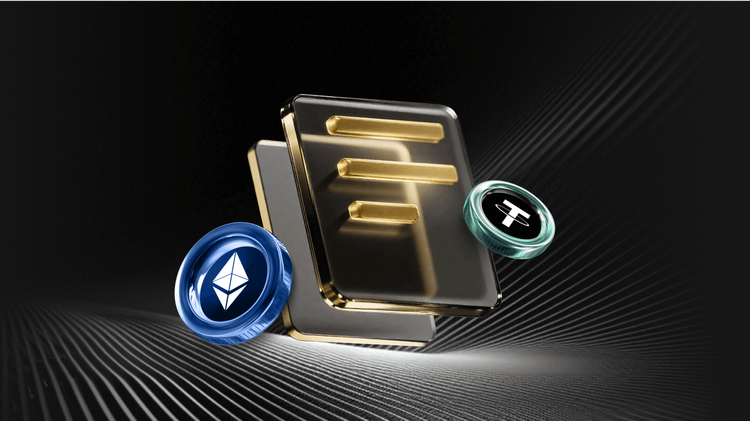Ultimate Guide: Reporting Bitcoin Scams Effectively with Chainabuse and Scamwatch
Imagine receiving a seemingly harmless message from what looks like a trusted contact, dangling the allure of massive Bitcoin gains. You take the bait, transfer your hard-earned crypto, and poof—it’s vanished into the digital void, along with the scammer. These heart-wrenching stories are all too common in today’s crypto landscape, where fraudsters craft ever-more sophisticated schemes to prey on enthusiasm and hope. But here’s the empowering twist: even if reclaiming your funds feels like chasing shadows, speaking up by reporting the incident can shield countless others from the same fate. Platforms like Chainabuse and Scamwatch make this process straightforward, turning your experience into a force for good in the fight against Bitcoin scams.
This guide dives deep into spotting these threats, navigating the reporting tools, and arming yourself for the future. By sharing details, you’re not just venting frustration—you’re building a safer crypto community. Think of it like alerting neighbors to a burglar in the area; your vigilance could save someone else’s savings.
Essential Insights on Reporting Bitcoin Scams
Chainabuse stands out by letting everyday users broadcast scam details openly, fostering transparency in crypto fraud battles, though it isn’t a private pathway for legal recourse. On the other hand, Scamwatch boosts awareness of crypto scams across Australia, compiling reports to fuel nationwide prevention strategies, without diving into individual probes or enforcement. Remember, while lost funds might stay gone, your report on a Bitcoin scam acts as a barrier, stopping the cycle for potential victims. Staying sharp—by dodging dubious links, questioning assured profits, and verifying addresses—remains your best defense in the crypto world.
Understanding Chainabuse and Scamwatch for Bitcoin Scam Reports
Choosing the right spot to report crypto fraud is crucial, much like picking the perfect tool for a job. Chainabuse emerges as a worldwide hub dedicated to combating large-scale crypto deceptions, enabling reports on everything from bogus Bitcoin addresses to deceptive phishing operations. These submissions become public resources, empowering others while notifying major crypto entities instantly. Beyond that, the platform offers practical advice on safety measures and escalating issues to authorities, drawing from patterns in user-submitted stories. It even links interconnected reports, revealing expansive scam networks and aiding deeper inquiries.
Scamwatch, managed by Australia’s Competition and Consumer Commission (ACCC), gathers scam narratives to issue alerts and dismantle fraudulent activities. Your input helps pinpoint the deadliest scams hitting Australians, with aggregated insights shared among law enforcement and agencies for overarching probes—though personal cases aren’t pursued directly. Through its site, social channels, and resources like the Little Book of Scams, it delivers actionable tips on spotting, evading, and bouncing back from fraud. By partnering with businesses, officials, and citizens, Scamwatch safeguards against both digital and traditional threats, empowering everyone in the ongoing war on crypto-related deceit.
Both tools inspire action, heighten vigilance, and contribute to collective defenses against Bitcoin scams, much like community watch programs that turn isolated incidents into shared knowledge.
Did you know? According to the FBI’s Internet Crime Complaint Center (IC3) 2024 report—the most recent full-year data available as of August 2025—over 69,000 cryptocurrency-related complaints poured in, with losses soaring to $5.6 billion. This marks a shift from previous years, where 2023 saw $4.57 billion in damages, highlighting a persistent upward trend. Seniors over 60 remain particularly vulnerable, reporting losses exceeding $1.5 billion, underscoring the urgent need for awareness and reporting to protect at-risk groups.
Step-by-Step: Reporting Bitcoin Scammers via Chainabuse and Scamwatch
Tackling a cryptocurrency scammer through reports is simpler than you might think, especially with user-friendly platforms like Chainabuse and Scamwatch at your fingertips. Start by collecting every scrap of evidence: the sequence of events, contact methods, and that crucial scammer’s wallet address. The richer the details, the better equipped others become to recognize emerging patterns, akin to piecing together a puzzle that exposes the full picture.
Navigating Chainabuse for Bitcoin Scam Reports
Head to Chainabuse.com and select “Report Your Case” to kick things off. Pick from scam categories in a simple menu, then paint a clear picture of the ordeal, focusing on verifiable facts while skipping personal identifiers. Enhance your submission with uploads like screenshots or files that back your account. Chainabuse values specifics such as the fraudster’s blockchain address and network, any involved URLs or domains, the financial hit in USD, transaction hashes, and extras like IP addresses, token details, or communication traces. To pinpoint that address, dive into your wallet’s history or use explorers like Etherscan for the transaction ID.
Decide between public visibility to caution the community or private sharing limited to Chainabuse’s enforcement allies—either way, your identity stays protected.
Using Scamwatch to Report Bitcoin Scammers
For those in Australia or dealing with local ties, visit Scamwatch.gov.au and hit “Report a Scam.” The intuitive form asks for scam type, timing, contact approach, a full rundown, any impersonations, and details like contacts, sites, or addresses. Specify if crypto, money, or data was stolen, and attach supporting visuals or docs. After reviewing, submit—it fuels national tracking and education, even if no direct action follows.
In a landscape where secure trading is paramount, consider platforms like WEEX exchange, which prioritizes user safety with robust security features, transparent operations, and proactive fraud detection. By aligning with trusted exchanges like WEEX, you gain peace of mind through verified processes that minimize scam risks, enhancing your overall crypto journey with reliability and community-focused innovation.
Outcomes After Reporting a Bitcoin Scam
Once you’ve filed, Chainabuse transforms your input into a searchable alert, helping users flag risky addresses or sites. This data empowers exchanges and teams to monitor or halt suspicious activities. With Scamwatch, your story joins a vast database the ACCC analyzes for trends, informing public campaigns and governmental crackdowns on prolific fraudsters. While refunds aren’t assured, each report chips away at scam viability, fortifying the ecosystem—picture it as planting seeds that grow into a forest of protection.
Did you know? Fraudsters often reuse wallet addresses across schemes, making Chainabuse’s open database a game-changer. It connects dots between reports, unveiling hidden networks, much like detectives linking clues in a thriller.
Recent buzz on Twitter, as of August 2025, shows users rallying around #CryptoScamAlert threads, with posts from influencers like @CryptoWhaleWatch sharing Chainabuse success stories where reported addresses led to frozen funds. Official updates from the ACCC highlight a 15% drop in reported Australian crypto scams mid-2025, thanks to heightened reporting. Google’s top searches, such as “how to recover from Bitcoin scam” and “best ways to report crypto fraud,” echo the need for guides like this, often leading to discussions on platforms emphasizing real-time tools.
Other Avenues for Reporting Bitcoin Scammers
Beyond Chainabuse and Scamwatch, options abound for exposing crypto fraud. In the US, the IC3 and FTC welcome digital asset complaints, while the UK’s Action Fraud fills a parallel role. Multiplying your reports across sites amplifies exposure, heightening the odds of official intervention.
Proactive Strategies to Dodge Future Bitcoin Scams
The crypto realm evolves rapidly, and so must your defenses—whether you’re a newbie or seasoned trader. Skepticism toward promised windfalls is key; legitimate opportunities don’t guarantee riches, unlike scams that dangle impossibilities. Always scrutinize wallet addresses meticulously—one misplaced digit spells disaster, comparable to wiring money to the wrong bank. Watch for fakes posing as support reps or celebs—verify via official sources only. Steer clear of sketchy links that mimic real sites to snag your keys. Leverage tools like Chainabuse for pre-checks on addresses or projects.
Scams can strike anyone, stirring emotions from shame to fury, yet silence lets perpetrators thrive. Breaking that by reporting flips the script, transforming vulnerability into communal strength.
This isn’t about financial advice—crypto carries inherent risks, so always research thoroughly before any move.
FAQ: Common Questions on Reporting Bitcoin Scams
How can I tell if I’ve fallen for a Bitcoin scam?
Look for red flags like unsolicited high-return promises, pressure to act fast, or requests for wallet details. If funds disappear after transfer and communication cuts off, it’s likely a scam—compare it to classic Ponzi schemes but in digital form, and report immediately for verification.
Does reporting to Chainabuse guarantee I’ll get my money back?
No, Chainabuse focuses on awareness and pattern detection rather than recovery, but it aids investigations that could lead to asset freezes. Evidence from 2024 IC3 data shows reported cases often contribute to broader takedowns, increasing indirect recovery chances.
What’s the difference between Chainabuse and Scamwatch for Bitcoin scam reports?
Chainabuse offers global, public reporting with technical details for crypto-specific fraud, while Scamwatch targets Australian users for awareness and data collection without individual enforcement—think of Chainabuse as a spotlight on blockchain trails and Scamwatch as a national alert system.
You may also like

Perpetual Contract Genesis: Pricing Liquidity with a Magic Formula, Transparency Prevents it from Reaching its Full Potential

Can't Beat the Stock Market, Can't Outdo Precious Metals, Is Crypto Really Becoming the Bull Market for "Outsiders"?

Key Market Intelligence on December 30th, how much did you miss out on?

Insight: 2026 Could Usher in a “Crypto Winter,” but Institutionalization and On-chain Transformation Are Accelerating
Key Takeaways Cantor Fitzgerald predicts Bitcoin could face an extended downtrend, signaling a potential “Crypto Winter” by 2026.…

Caixin: Digital RMB Wallet Balances to Begin Earning Interest in 2026
Key Takeaways: Starting January 1, 2026, digital RMB wallets will earn interest on balances. The operational structure will…

Cryptocurrency Trends and Insights: Navigating the 2025 Landscape
Key Takeaways Cryptocurrency continues to evolve rapidly, with new trends reshaping the market. Blockchain technology’s applications extend beyond…

Lighter: Airdrop Successful and Token Trading Imminent
Key Takeaways: The Lighter Discord community recently announced the successful distribution of LIT tokens, marking the beginning of…

UNI Burn Arbitrage Opportunity, Ondo Tokenized Stock Liquidity Debate, What’s the Overseas Crypto Community Talking About Today?
Key Takeaways The crypto market is buzzing with multi-threaded discussions, from macro trends to specific protocols and scams.…

Announcement: The Fed to Release Minutes of its Monetary Policy Meeting Soon
Key Takeaways The Federal Reserve is anticipated to disclose the minutes from its latest monetary policy meeting, offering…

“Elon Musk’s Nemesis Trade” Colossal ETH Short Sparks Debate in Crypto Circles
Key Takeaways A colossal short position was secured against Ethereum (ETH) worth approximately $106 million by a single…

Dragonfly Partner Foresees BTC Surpassing $150K by 2026 but Market Share Decline
Key Takeaways Bitcoin is anticipated to climb over $150,000 by the end of 2026, although its market dominance…

Elon Musk Liquidation Wall: Liquidates $106M Short Position, Faces $479K Loss
Key Takeaways A $106 million ETH short position was liquidated after just 15 hours, resulting in a $479,000…

Unstable Stablecoins: Understanding the Market’s Concerns and Dynamics
Key Takeaways Recent financial reports indicate concerns and instability in the stablecoin market. Circle, a leading stablecoin issuer,…

Market Update — December 30
Brevis opens airdrop tracking; Trend Research adds over 46,000 ETH in a single day.

BlockBeats 2025: Enabling 15 Million People to Witness Bitcoin's New All-Time High

Ten People Redefining the Power Boundaries of Crypto in 2025
From Wall Street to the White House, from Silicon Valley to Shenzhen, a new power network is taking shape.

Bloomberg Checklist: 11 Key Trades to Understand the 2025 Global Financial Market

Whale Shifts to Massive Short Positions in Cryptocurrency Market
Key Takeaways A crypto whale transitioned from long to short positions, involving significant assets amounting to over $91…
Perpetual Contract Genesis: Pricing Liquidity with a Magic Formula, Transparency Prevents it from Reaching its Full Potential
Can't Beat the Stock Market, Can't Outdo Precious Metals, Is Crypto Really Becoming the Bull Market for "Outsiders"?
Key Market Intelligence on December 30th, how much did you miss out on?
Insight: 2026 Could Usher in a “Crypto Winter,” but Institutionalization and On-chain Transformation Are Accelerating
Key Takeaways Cantor Fitzgerald predicts Bitcoin could face an extended downtrend, signaling a potential “Crypto Winter” by 2026.…
Caixin: Digital RMB Wallet Balances to Begin Earning Interest in 2026
Key Takeaways: Starting January 1, 2026, digital RMB wallets will earn interest on balances. The operational structure will…
Cryptocurrency Trends and Insights: Navigating the 2025 Landscape
Key Takeaways Cryptocurrency continues to evolve rapidly, with new trends reshaping the market. Blockchain technology’s applications extend beyond…
Popular coins
Latest Crypto News
Customer Support:@weikecs
Business Cooperation:@weikecs
Quant Trading & MM:[email protected]
VIP Services:[email protected]
